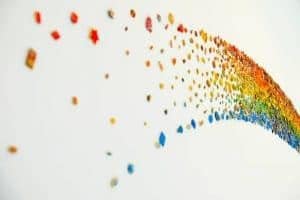If you’ve ever sent photos or your logo to a graphic designer, ad agency, or printing shop for a project you worked on, you might have heard something like this from them:
“Could you please send high resolution photos? The ones you sent won’t work.”
“We need a vector art logo in order to produce those T-shirts/pens/baseball caps for you.”
What?
You may have wondered if “vector art” is some kind of sci-fi lingo. And what exactly is meant by “high-resolution” anyway?
I think I can help shed some light on these mysteries.
Let’s start with vector art. Your service provider (designer, ad agency, or whomever is creating art for you) will ask you for either vector or raster art, depending on what kind of project you’re undertaking. You probably already know the difference between raster and vector art; you just don’t know that you know. Huh?
This will help clear things up: picture in your mind some clip art, the kind you might find if you’re designing something in Microsoft Word (which, by the way, I don’t recommend you use as a design program.) You can make the clip art as big as you want without it looking any different than it did before you resized it. This is what is known as vector art, also called line art. It is based on line drawings and applies a mathematical formula every time you change its size, which allows you to make your design any length/width you want without loss of quality.
Generally speaking, any company that uses a silkscreen or embroidery process to produce personalized T-shirts, key chains, etc., with your logo will prefer that you supply them with vector/line art. Some sign companies also require or prefer line art. This kind of art allows them greater flexibility in breaking the design down into different colors for printing and also allows them to produce any text in your design without needing to have the actual font you originally used in your logo.
In contrast, raster images are not made up of lines. They are made out of pixels, which you can see in any photograph when you either make the photograph larger than it originally was, or when you zoom in on the photograph in an image editing program. Pixels are simply those tiny boxes of color that make up any photograph. If you make a photo larger than its original size, the details and edges will look blurry. This is what is known as pixelization. The more pixels contained in a photograph, the higher the resolution. But we’ll discuss that in more detail in part 2 of this post. Stay tuned!





0 Comments